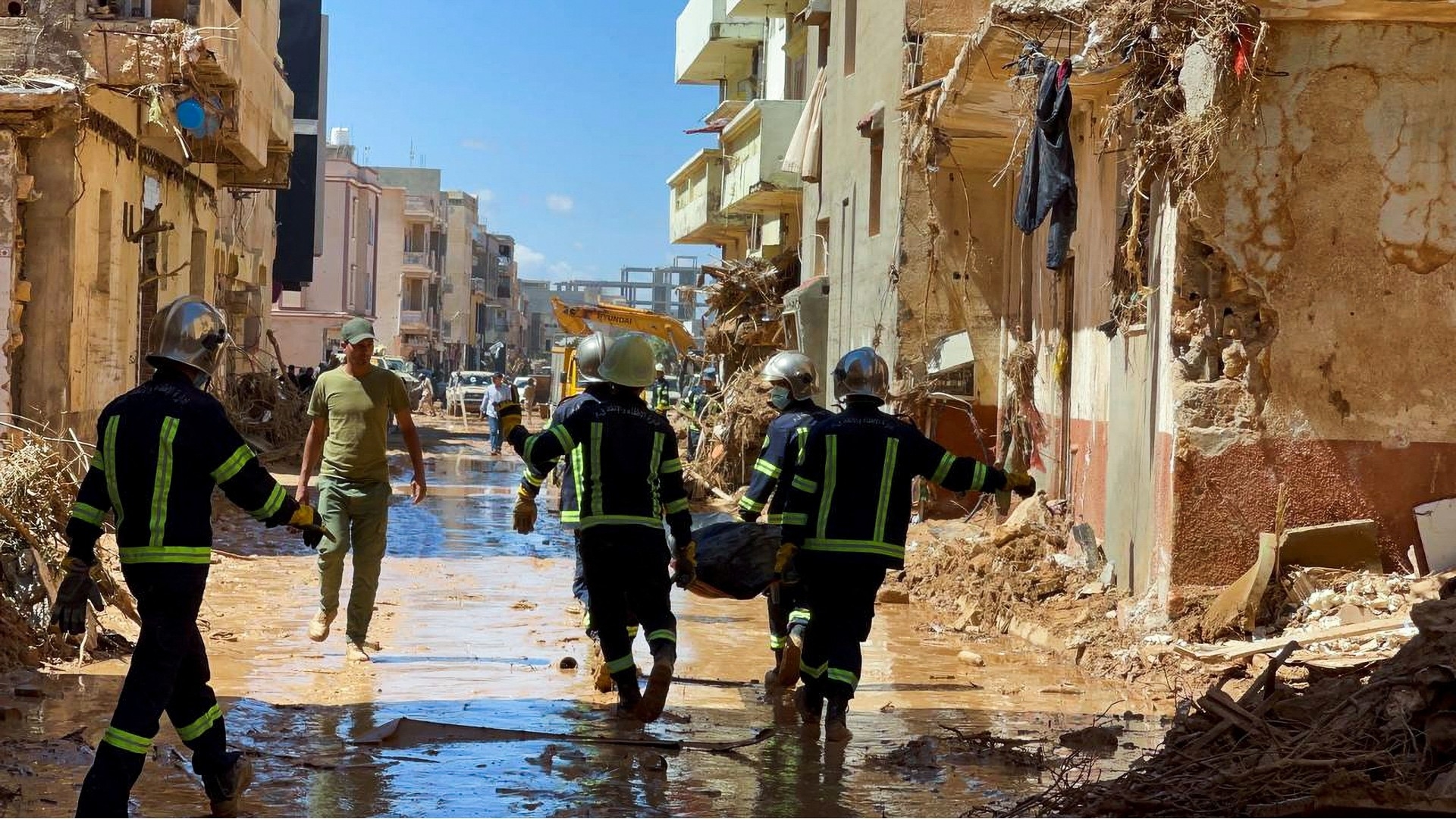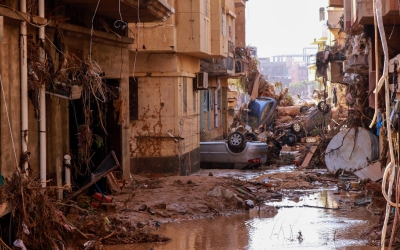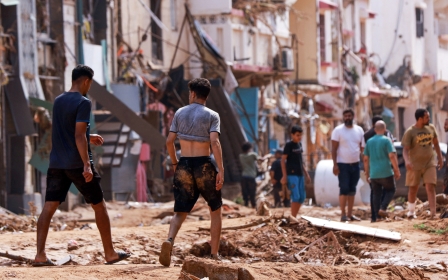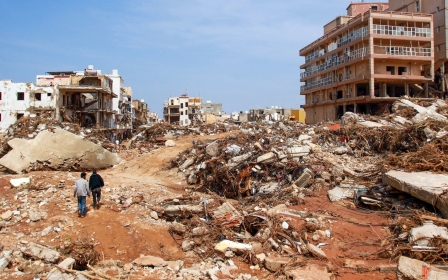Libya floods: The rains fell, then Derna’s residents woke to find their city gone

As Ibrahim al-Dirnawi settled into bed on Sunday night, rain and wind lashed against his Derna home.
“The heavy rains were continuous for hours before we went to sleep, but we never imagined waking up to find the city completely vanished,” the 35-year-old told Middle East Eye.
On Monday, two dams outside the city broke under the torrential rain and rapidly rising waters. Derna was suddenly under water, with an estimated 25 percent of the port city swept into the Mediterranean.
Officials say more than 5,000 are dead and 10,000 are missing. Bodies continue to wash ashore.
International help is trickling in, but Libya’s authorities, which are divided between competing governments in the east and the west, are totally overwhelmed.
New MEE newsletter: Jerusalem Dispatch
Sign up to get the latest insights and analysis on Israel-Palestine, alongside Turkey Unpacked and other MEE newsletters
It took many hours for the scale of the catastrophe to become clear.
Faced with disaster, Dirnawi fled – “to convey our voices to the world for help and rescue. There are thousands of bodies in the streets, under the rubble, and in the sea”.
No power, no food, no water
Civil activist Ali al-Rabai was fortunate enough to be outside Derna when Storm Daniel struck the city.
Yet he remains in contact with his friends and relatives in the eastern Libyan city, who are desperately seeking a way out.
"We cannot reach Derna currently, and there is no electricity, communication, food, or water," he told MEE.
"The sea level has risen to unprecedented levels."
Derna’s dams date from the 1980s, and last year experts warned they were vulnerable to collapse if overwhelmed by flooding.
The city, known for producing titans of Libyan culture and its rebelliousness, was one of the first to rise up against Muammar Gaddafi in 2011.
Since then, it has endured neglect from Libya’s shifting authorities, and even siege and assault from the forces of Khalifa Haftar, a commander who dominates eastern Libya.
Storm Daniel’s waters have wrecked more havoc than bombs ever could. According to Ahmed Amdoudar, a member of the Derna Municipal Council, after the dams collapsed, the waters brought down four main bridges that connect different parts of the city.
Another key bridge leading to the coast was also destroyed, he added. Several residential buildings were swept off the face of the earth, even some that had up to 12 floors.
Derna is now completely isolated. All roads in and out are impassable, making aid deliveries - and escape - incredibly challenging.
Creaking infrastructure
Derna sits below a hilly region known as the Green Mountains. The topography made it a picturesque spot - but deadly too, according to Mohamed Doma, acting water resources minister with the eastern government.
Doma told MEE that because the rain waters accumulated in the Green Mountains, they rushed down into the valley known as Wadi Derna and created great pressure on the dams.
When the storm passed by the city of Benghazi to the west, which lies in open plains, the risk was nowhere near as severe.
Doma confirmed that Derna’s dams were old and in need of maintenance.
“They were not built according to modern standards and specifications, making them unable to withstand such unusual natural phenomena for the region,” he said.
With two competing governments, political instability and war, maintenance and renovation of Libya’s creaking infrastructure has been almost non-existent, Doma added.
And Derna has not been alone in this catastrophe.
Seventy kilometres west along the coast lies Susa, another town badly hit by Storm Daniel.
Its mayor, Khaled Abrik, said the town and its neighbouring areas have seen their infrastructure collapse before their eyes, including several roads and bridges.
Communication networks and electricity in the region have been completely cut off.
Abrik told MEE that the road leading to the entrance of Susa, which is about 18km long, has completely collapsed, in addition to four bridges.
He said the Green Mountains region had suffered neglect for decades, and now entire neighbourhoods had been flattened.
This article is available in French on Middle East Eye French edition.
Middle East Eye delivers independent and unrivalled coverage and analysis of the Middle East, North Africa and beyond. To learn more about republishing this content and the associated fees, please fill out this form. More about MEE can be found here.






